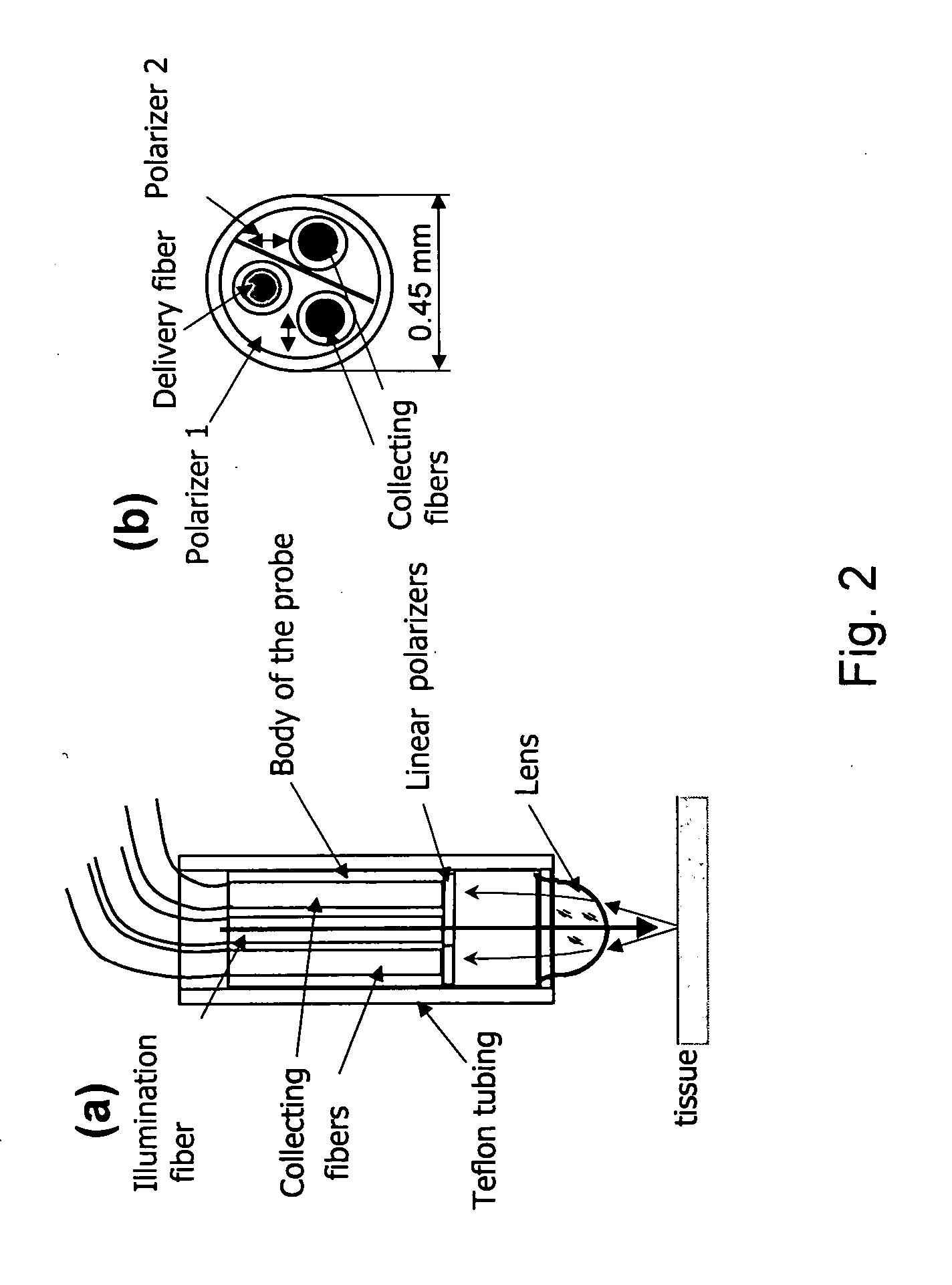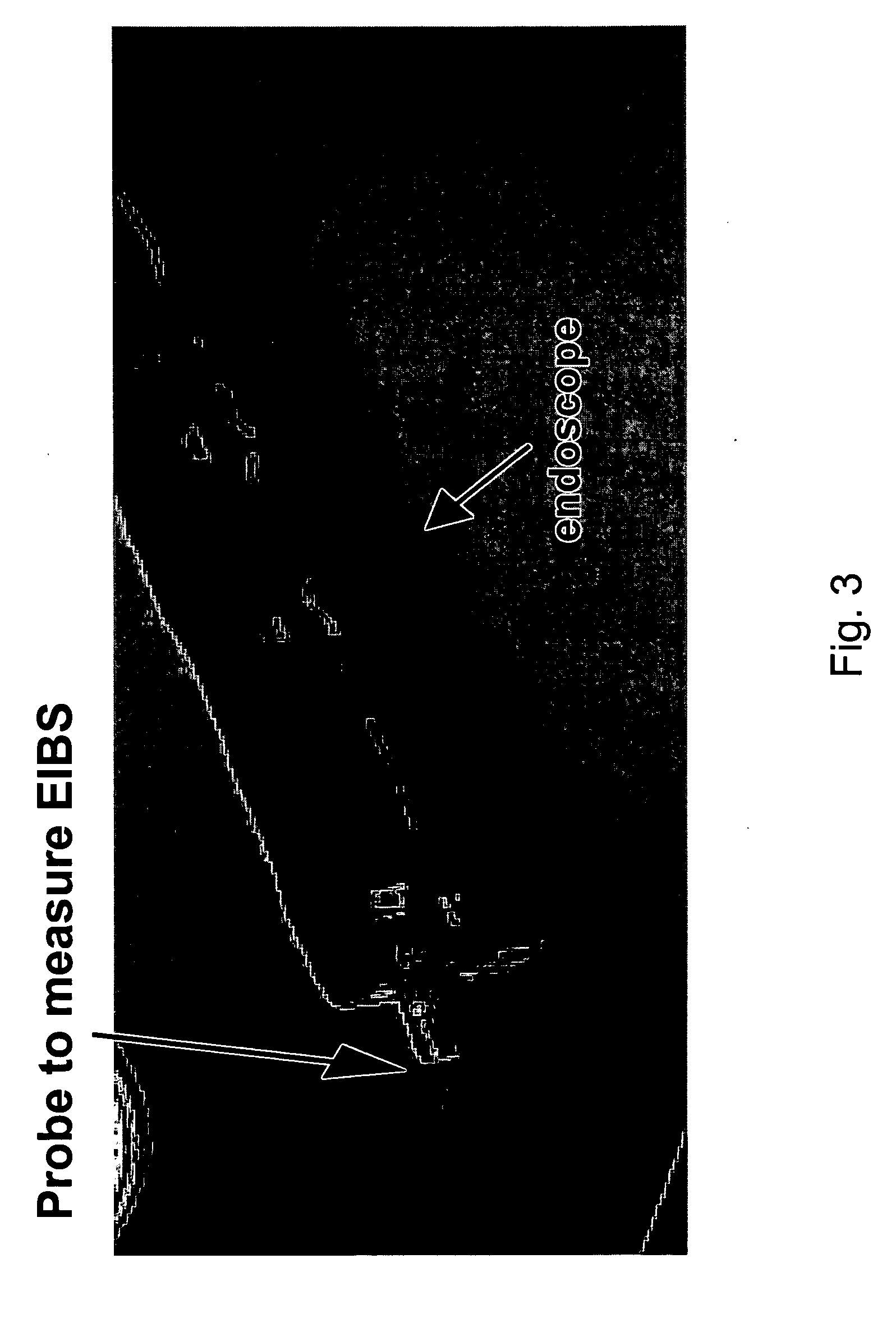Method of recognizing abnormal tissue using the detection of early increase in microvascular blood content
a microvascular blood content and abnormal tissue technology, applied in the field of light scattering and absorption, can solve problems such as difficult detection and usability of methods
- Summary
- Abstract
- Description
- Claims
- Application Information
AI Technical Summary
Benefits of technology
Problems solved by technology
Method used
Image
Examples
examples
[0055] Without intent to limit the scope of the invention, exemplary instruments, apparatus, methods and their related results according to the embodiments of the present invention are given below. Note that titles or subtitles may be used in the examples for convenience of a reader, which in no way should limit the scope of the invention. Moreover, certain theories are proposed and disclosed herein; however, in no way they, whether they are right or wrong, should limit the scope of the invention so long as the invention is practiced according to the invention without regard for any particular theory or scheme of action.
[0056] Polarization Gated Fiber-Optic Probe to Detect EIBS: In one aspect, a fiber-optic probe has been developed to accurately detect blood supply in tissue mucosa. FIG. 2 illustrates the design of the probe in one embodiment and FIG. 3 shows a photograph of the probe protruding from an accessory channel of a colonoscope. The probe has one or more 100 μm-diameter f...
PUM
 Login to View More
Login to View More Abstract
Description
Claims
Application Information
 Login to View More
Login to View More - R&D
- Intellectual Property
- Life Sciences
- Materials
- Tech Scout
- Unparalleled Data Quality
- Higher Quality Content
- 60% Fewer Hallucinations
Browse by: Latest US Patents, China's latest patents, Technical Efficacy Thesaurus, Application Domain, Technology Topic, Popular Technical Reports.
© 2025 PatSnap. All rights reserved.Legal|Privacy policy|Modern Slavery Act Transparency Statement|Sitemap|About US| Contact US: help@patsnap.com



